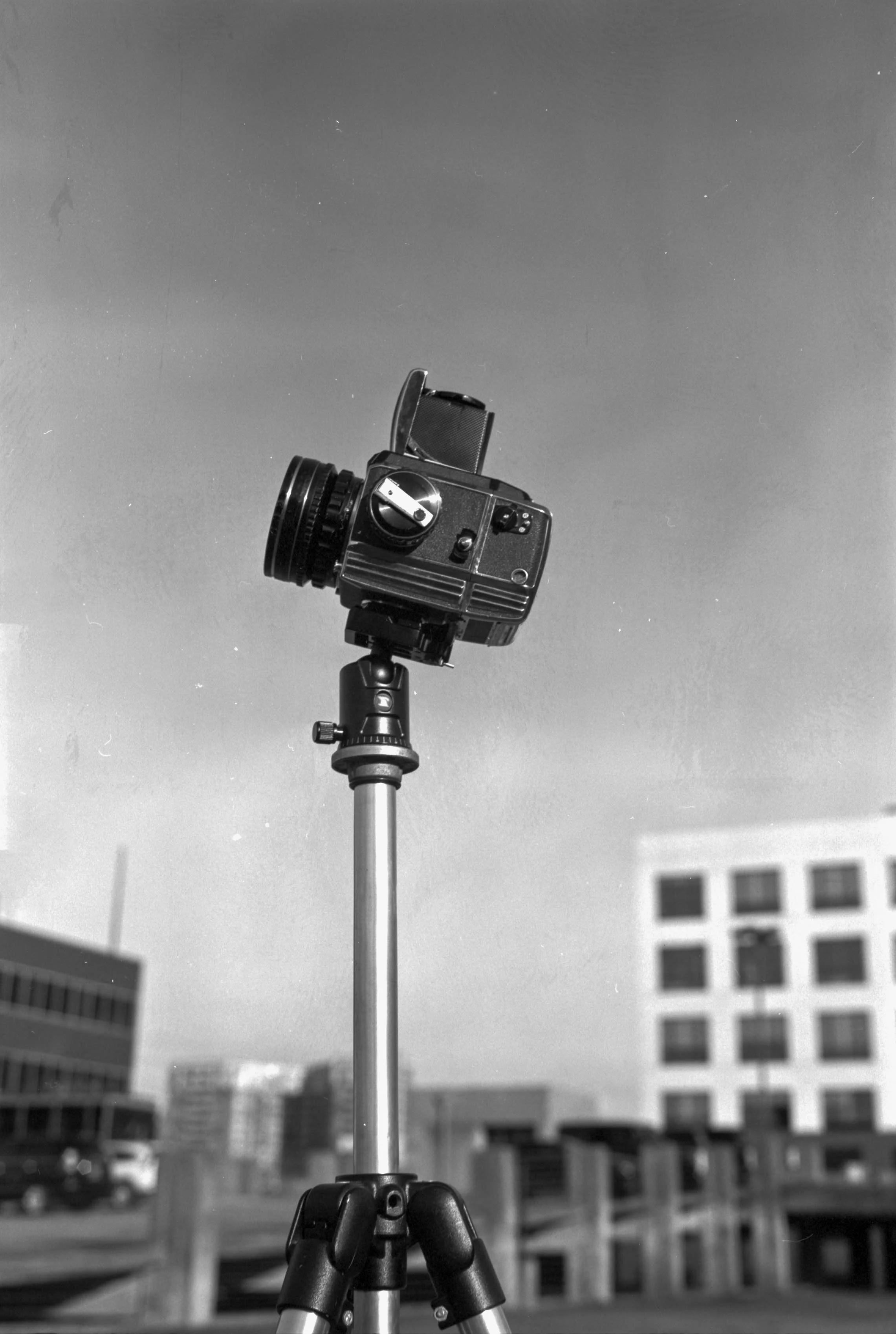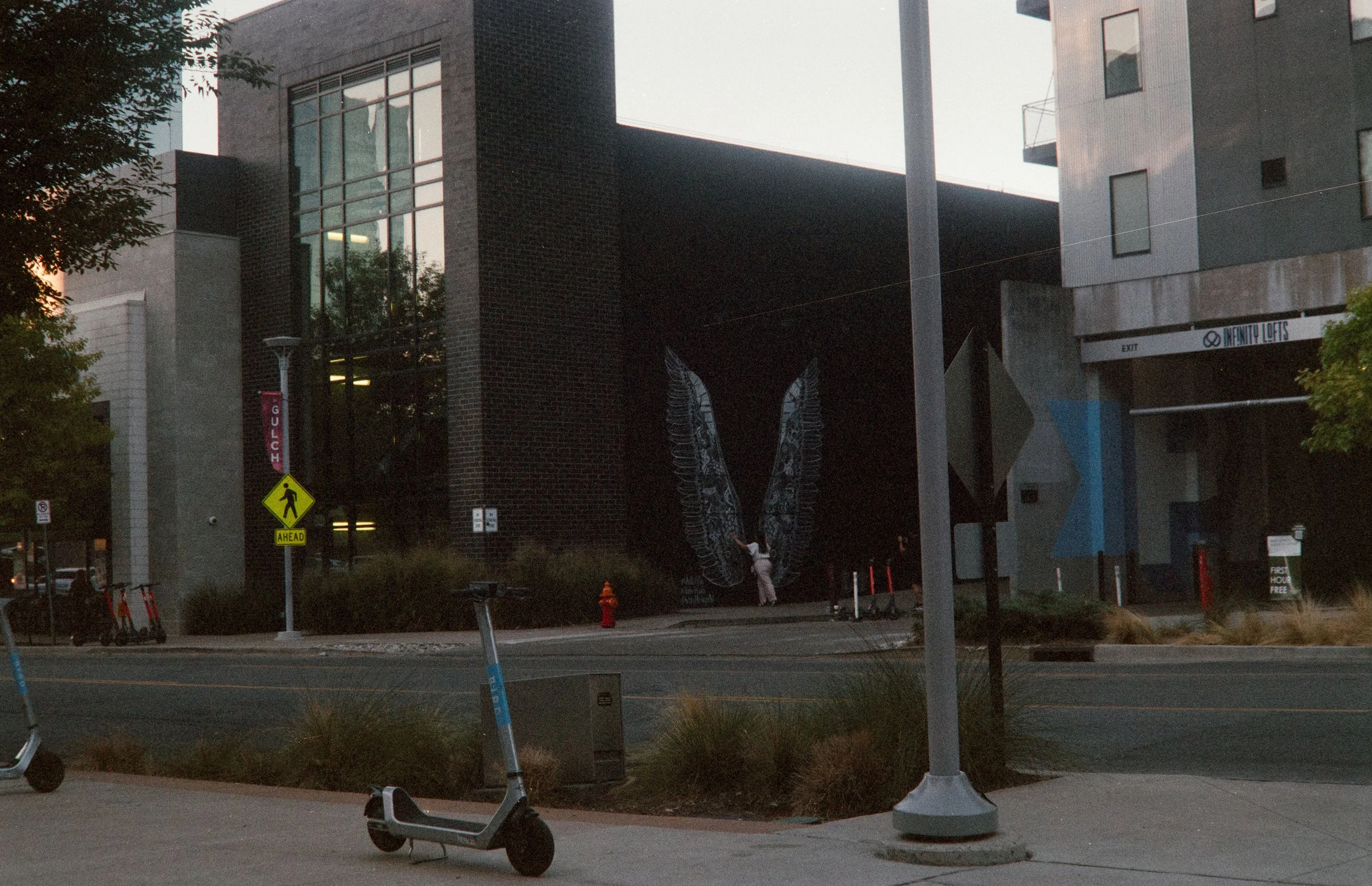Blog
Black & White Urban Landscape Photography
A quick drive around Nashville one Saturday and I found a rolls worth of interesting businesses.
This building located in a run-down part of town reminds of a time when we were looking to the future. With its golden dome and past-future design it’s like the builders were making a statement that things in the future are going to be different and we want to be a part of that.
Thrift stores are one of those businesses that always thrive, even in times when you think they wouldn't. It’s obvious that the store has been opened for years and you can bet it will continue for years to come.
The House of Pizza is an iconic restaurant here in Nashville. If you have the chance to, definitely get a slice. Or even better, get an order of the lasagna. it’s the best you will ever have. With the changes coming to The Arcade where it is located, if it survives might not be a forgone conclusion.
Varallo’s is Tennessee’s oldest restaurant. If this was the original location it was remodeled sometime in the 1960s or 1970s. This is a place I have never eaten; it is downtown and only open for breakfast and lunch so I haven’t made the trek. Maybe I should.
This gas station is in the heart of Hillsboro Village. While it looks closed it is not, they just keep a clean lot on the weekends. I forgot to write down the name, but I believe it is something like Village Auto-Service. I have had them do work for me in the past and they do a good job.
The venerable Hillsboro Hardware has been around for longer than I can remember. They are always busy when opened and are a great example of how smaller shops can thrive in a community.
This Mapco gas station is deceptive. The Mapco chain has definitely not been around as long as this building. A long time ago this was a two-bay garage. Guessing based on the curved corner of the former lobby I would guess this garage was first opened in the 1940s if not earlier.
This building was the one I set out with the goal of photographing. The now closed, Coin Laundry Express, was once a thriving part of the neighborhood. It’s one of those weird tales, around 3 months before closing it got a face-lift in the guise of new signage. It’s hard to know what happened, maybe they invested too much in new equipment and just didn’t see the business.
There you have it, a short Saturday morning drive worths of images.
Enter the Fuji GW690
First thoughts on the Fuji GW690
Recently I finally pulled the trigger and ordered a medium-format range-finder camera. Being a Bronica fan I really wanted the Bronica RF645, but after getting the Tomiyama Art Panorama 170 there just wasn’t any budget for a $2000 range finder camera. I had been looking at some others and finally decided on the Fuji GW690 mark II (in my case possibly mark 1.5, more on that later).
If the counter is to be believed, my example has only had 14 rolls (now 15) of film in it. And, honestly, it looks like a low-milage example. The strength of the dollar vs. the yen really helped on the price. Another thing that helped keep the price down was a quirk of Japanese listers - they only ever list items that are “Mint++++++++” and this camera was just listed as “Good” so the asking price was about a third less than the other listings for camera of this model.
Once it arrived I grabbed a roll of black and white film from the drawer, loaded it up, and went for a walk. This camera is a joy to use the only real gripe I have is that I wish it had a built in meter, but it’s probably for the best that it doesn’t to minimize the risk of battery damage and the like.
As the name implies the negatives are 6cm X 9cm and you will only get eight shots on a roll of 120 film. I love the size of the negatives and recently I have been pondering if 36 shots per roll that come on 35mm rolls of film is really too many. I want to be able to have a steady schedule of new images, something like one roll a week or ever other week and having to take fewer shots really works with my style. I try to put some thought into answering the question “do I want to take this picture” with every shot and only having eight shots to take makes that question have even more meaning. And generally speaking, I can get eight shots any time I take the camera out, but getting 36 means I take a lot of pictures that I wouldn’t necessarily take otherwise.
Something I look forward to is making prints from the negatives. I am more interested in the “alternate” printing process like Platinum Palladium and I have been wanted to make those kinds of prints straight from negative. I like the idea of a small picture that has a lot of detail; one that really pulls the viewer in and almost whispers its secrets one person at a time. I have high hopes that these negatives are the right size to really make that happen. Stay tuned for more on this.
Leica IIIf First Look
Some thoughts on the first roll of film I shot with the newly CLA’d Leica IIIf and the TTastisans Light Meter.
Near the beginning of lockdown I came across an ad on Facebook marketplace for what I thought at the time was a nice example of a Leica IIIf black dial with a Summicron 5cm f2 lens priced as a group for what the body was selling for on eBay at the time. Naturally, I jumped at the chance to own an underrated (is that even possible for a Leica) camera. Once I got it home, I realized that it needed a CLA so I did the normal research and set it off to Gus Lazzari over in North Carolina knowing that it would take a while to get back, but hoping for a quick turnaround nonetheless.
The quick turn around didn't happen, but that’s part of the deal you make when dealing with nearly 70 year-old things that need servicing so I wasn’t too surprised. In all honesty I wasn’t too sure what I would do with camera when it came back anyway. With the prices and lead times from developing film here in town I had moved on from shooting film during the pandemic. I knew the lens could be adapted to both my Leica CL and Leica SL so I felt getting the CLA was worth the wait and cost as the lens is what needed the most work. This lens is a Thorium coated example and still has some of the coating so I had high hopes for some dreamy pictures.
When I got the package back I thought of just putting the body up for sale on eBay but had my mind changed while trolling Facebook marketplace when I came across a copy of book called “New Leica Manual” by Willard D. Morgan & Henry M. Lester published in 1953 for cheap. This book is basically the most in-depth manual for a camera I have ever seen. Reading it made me want to try out the camera at least once or twice before I sold it on.
I knew I would need some sort of exposure meter so I researched those that mount in the accessory shoe mount and decided to get the TTartisan Light Meter in silver to match the camera. I got this one mainly because 1) it was available to purchase and 2) I like the simple nature of the dials and + or - LEDs used to indicate the exposure. Once I had the meter in-hand I loaded in a roll of long expired Kodak Gold 400 film and set off on a walk around the neighborhood.
At first I was worried that the split rangefinder/composing viewfinder arrangement would be difficult to use in practice. Much to my surprise I found the focusing and composing workflow to be easy and natural. It didn’t take more than five minutes for it be second nature. My basic approach was to use the meter to get a reading, set the speed, advanced the film, compose, focus, re-compose and then take the shot. I’m sure that a Nikon Z9 user could take over 1,000 pictures in the time it took me to take one, but speed is not the point of this camera system.
When researching the light meters the reviews for the TTartisan meter consistently stated that the readings were 1 stop under what would be found comparing to an app on a phone. And I can see how difficult getting an accurate reading could be with this meter as the f-stop/film speed dial is not indexed; meaning that it is not certain that a specific f-stop or film speed has been selected. In other words, it is not possible to exactly select f2 or exactly select ISO-100 with this meter. I’m sure most of the time the selection is really, really close, but you will never be able to exactly select a setting with the left dial. The lack of an index on the left dial stands out compared to the shutter speed selector dial which is indexed. I’m not saying the meter is unusable, you just have to know that it is not accurate and that it cannot be accurate due to the way it has been designed.
When I got the scans back from the developer they were grainy and soft, exactly what I expected. And, also, what I want from this kind of camera. One of these days I will put in some new film and when I do I am sure the scans will be crisper and look better overall. That being said, film cameras were not meant to make digital images and these negatives were no exception. On my MacBook Pro with a 32” Samsung 4k monitor the 22” x 14” (as reported by Photoshop) scans did look fuzzy and the grain was as big as a pin head and someone could be excused for thinking that the images just were not any good. But film images are meant to be printed, which is what I did. I have a Canon Pro-10 printer and once I turned it on, pleaded with it, begged it, threatened it, and ultimately bribed it I was able to print a few of the images. I made 4” x 6” prints on Canon Photo Paper Pro Platinum paper. The results were what you would expect - perfectly serviceable. The grain wasn’t noticeable, the sharpness was acceptable and all-in-all produced fine looking prints. I do believe that the prints were about 1/2 stop under exposed and I probably could have done some editing in Lightroom but that wasn’t what I wanted to do with my time. I wish there was a way to convey how the prints looked here, but that just isn’t possible - you have to see it for yourself.
If you’re interested hit me up on Twitter or Instagram and I will send you one of the prints. For now, I have included a gallery with the images. All I have done is resized the images down 50% and saved with the “8 - large” setting in Photoshop so the file size would be low enough to upload here. Until next time, thanks for reading.










































